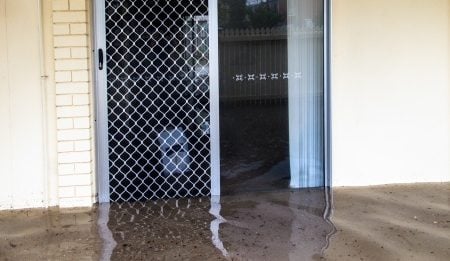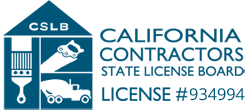
Water damage in hotels can create major disruptions, affecting both business operations and guest satisfaction. From leaking pipes to heavy rains causing flooding, hotels in Los Angeles face various water-related challenges that need immediate attention. It’s crucial for hotel managers and staff to have a clear action plan for restoring their facilities efficiently and effectively.
Assessing the Extent of Water Damage in Hotels
The first step in restoring a water-damaged hotel is figuring out how bad the damage is. This means taking a detailed look at every part of the hotel, from the lobby to guest rooms. The goal is to spot trouble areas quickly so steps can be taken to fix them.
Begin by walking through the entire hotel. Check common areas, individual rooms, and utility spaces like basements or storage rooms. Look for visible signs of water damage, such as stained walls, ceilings, or flooring. Adjusted smells are also signs of moisture or mold growth.
Use moisture meters to find hidden water buildup behind walls or under floors. These tools help find issues that might not be seen right away but can cause big problems later, like structural damage or mold growth. Be sure to inspect HVAC systems thoroughly, as water can get in and affect air quality.
Make a list of affected areas, highlighting those that need urgent care. Having a clear understanding of the damage allows for better prioritization of tasks and allocation of resources, ensuring nothing is overlooked. Regular assessments keep the restoration process on track and minimize disruptions.
Immediate Steps to Mitigate Further Damage
Once the extent of the damage is known, acting fast to stop more harm is necessary. Water can quickly worsen if not handled, so these first steps are crucial to protecting the hotel.
1. Stop the Source: If possible, identify and fix the source of the water intrusion. This might be shutting off main water valves or repairing leaks. Fixing these problems will prevent more water from coming in and make it easier to clean up.
2. Ensure Safety: Turn off electricity in affected areas to avoid electrical hazards. Make sure that all staff and visitors are safe and aware of any dangerous areas.
3. Move Valuables: Relocate furniture, electronics, and important documents from wet areas. This reduces the risk of loss and makes the drying process smoother.
4. Ventilate the Area: Open windows and doors to allow air circulation. Ventilation helps lessen moisture and decreases the likelihood of mold growth.
5. Document Damage: Take photographs and make records of all observed damage. This documentation is useful for insurance claims and planning restoration efforts.
These actions set the stage for a successful recovery by limiting damage and establishing a clear path forward. Quick response not only saves time and money but also helps keep hotel operations running smoothly.
Effective Water Extraction and Drying Techniques
Getting rid of water quickly is crucial for preventing further damage. Water extraction begins with using pumps and vacuums to remove standing water. Choose equipment based on the severity—industrial-grade pumps for larger amounts and wet vacuums for smaller, manageable areas.
Once standing water is gone, focus on drying and dehumidification. Use heavy-duty fans and air movers to circulate air throughout the affected spaces. These tools help evaporate the remaining moisture, speeding up the drying process.
Dehumidifiers play a key role in reducing humidity levels. High humidity encourages mold growth, so it’s important to monitor and control moisture in the air. Place dehumidifiers in different parts of the hotel to ensure effective drying.
Use damp-meters to check for hidden moisture in walls and floors. These meters identify spots that need more drying attention. Keeping the drying process consistent and thorough prevents mold spores from developing, eliminating potential health risks to guests and staff.
Implementing these steps ensures the hotel is dried correctly, reducing the risk of long-term consequences. Restoring normal humidity levels keeps the facility safe and ready for business faster, preserving the comfort and safety of future guests.
Restoration and Prevention Strategies for the Future
Once the immediate crisis is over and the water is addressed, restoring and preventing future issues should be the focus. Begin by repairing areas damaged by water, such as drywall, flooring, or electrical systems. Choose materials that are mold-resistant and durable to withstand any future incidents.
Consider installing automatic water shut-off systems. These can help quickly stop leaks from turning into floods, minimizing potential damage. Regular maintenance checks on plumbing systems and HVAC units can catch problems before they escalate.
Implement better drainage solutions around the building. Gutters, downspouts, and proper landscaping direct water away from the hotel, preventing potential flooding. Waterproofing basements and lower floors provide an extra layer of protection against leaks and floods.
Educate hotel staff on emergency response plans. Regular training sessions ensure everyone knows what to do during a water-related crisis, helping to mitigate damage efficiently. Keeping everyone informed makes recovery quicker and smoother.
Frequent evaluations of these new measures help maintain their effectiveness, ensuring the hotel remains a safe environment for guests and staff. Planning ahead turns past issues into future strengths, providing peace of mind and security.
Conclusion
Restoring water-damaged hotels in Los Angeles requires swift and strategic action. From assessing the damage to implementing recovery and prevention strategies, addressing each step with care ensures the hotel returns to a state of safety and comfort. Effective planning and proper execution not only restore the hotel’s physical space but also elevate its resilience against future challenges.
For hotels facing water damage disruptions, Restoration Masters is ready to assist in overcoming these challenges. Our comprehensive expertise in restoration and preventive strategies ensures your hotel’s swift return to operation. Contact us today to safeguard your property and guests with reliable water damage restoration.





